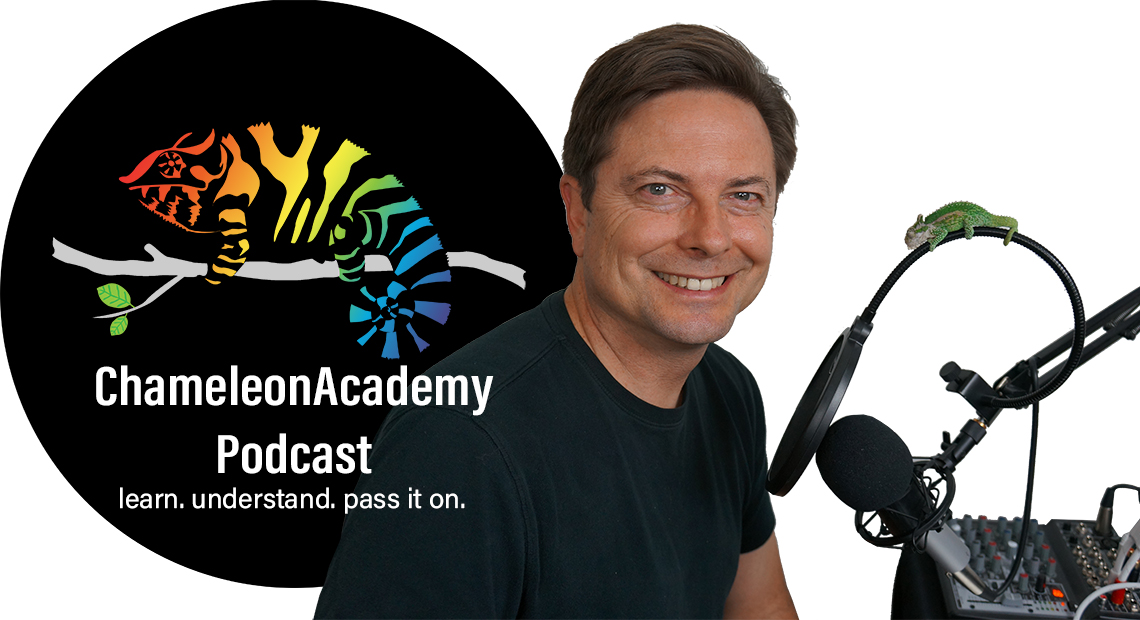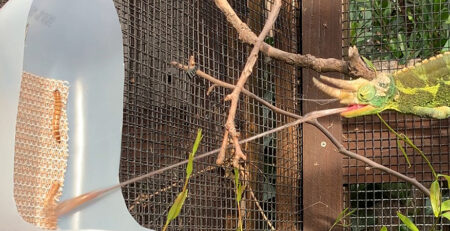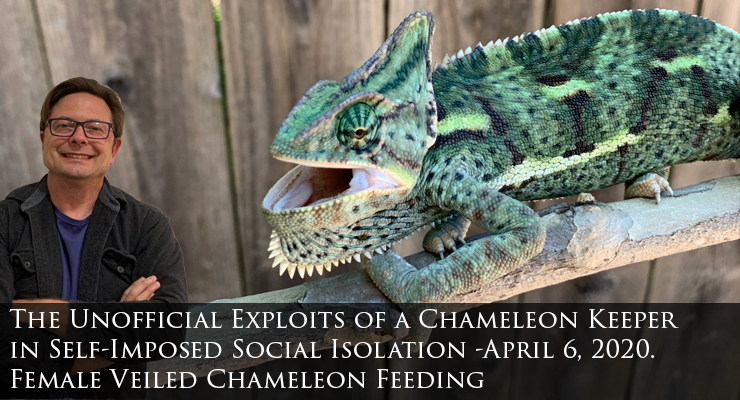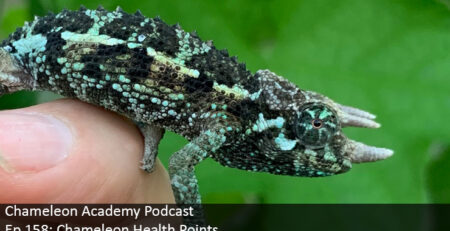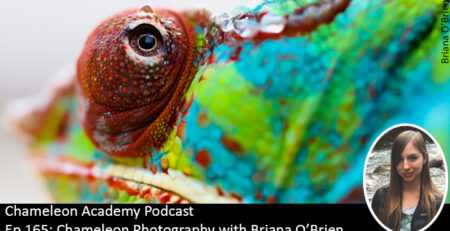Ep 127: UVB For Montane Chameleons
Listen Here!
The major steps to creating a supplement routine that does not include vitamin D3 or vitamin A are to understand what a chameleon needs. And this is not an easy task. We hardly know what humans need, much less chameleons. So we will have to run tests and share with each other. As a refresher, vitamins D3 and A are on my hit list for removing from the supplementation because, as far as we know, they are not naturally ingested in the wild and by giving those vitamins orally we bypass the internal mechanisms that the chameleon’s body has to limit how much of those vitamins are stored. You see, D3 and A are fat soluble and if there is too much there becomes a toxic situation. We will first focus on vitamin D3 as it is quite clear how chameleons get D3 and we have the means to provide it through their natural path. Vitamin A is a mess and we will tackle that can of worms later.
Transcript (More or Less)
Chameleons, like us, manufacture vitamin D3 by using the energy they get from a narrow band of ultraviolet wavelengths. This is started in the skin and travels through the liver and kidneys to be changed around and end up in a form that allows the body to absorb calcium from the digestive tract. It is worth understanding this internal process, but to do so would means a lot of detail that I would rather not dive into right now. The important thing for us hobbyists to understand is that by providing the correct amount of UVB, we can remove vitamin D3 from our supplementation.
Now, let me be clear about this D3 mission. Vitamin D3 has been used as a supplement safely for decades. And, as we heard on the last episode, we have established baseline amounts that we can be comfortable as being both effective and safe. So if you currently have a routine that includes D3 you do not need to panic. The purpose of removing D3 is to move our husbandry art closer to perfection. For those of you that get bored easily, do not worry, perfection in the art of chameleon husbandry is far off into the future and I am sure it will not be achieved in my lifetime. So I, at least, will not be out of a podcasting job any time soon. But moving our husbandry closer to nature will provide to us answers to questions we didn’t know to ask and it is what the chameleon developed to need. We can either spend our efforts figuring out what a safe and effective diet of D3 is for each species or else we can figure out a safe and effective level of UVB and let the chameleon do what they naturally do. At least as close as is possible with our attempts to mimic nature.
So, this episode is about figuring out UVB levels. Once we get our UVB levels in the effective range we can do away with D3 in our supplement. To start this exploration we need to understand a couple of concepts about UVB.
The first is that safe and effective levels are two different things. The minimum effective level is the minimum levels that will energize the skin to carry out the D3 conversion process. The maximum safe level is the level you can provide without bringing on the detrimental effects of UVB. Let’s be clear. UVB will kill your chameleon. You know this as sunburns. UVB is that strange thing where there is a certain window in which it is lifegiving for the D3 process and then it becomes death-bringing as it produces burns and cancers. And so finding a balance in UVB is critical. It seems all of life is like this. You can actually kill yourself by drinking too much water. Luckily, the amount of water you have to drink to harm yourself is beyond what most of us could ever force ourselves into. UVB, though, is silent and does its damage before you are aware of it. So we have to be careful.
This is the way we will approach UVB. At UV Index 0 there is no UVB. No danger and no D3 conversion. As we increase our UV Index, this is the method by which we measure UVB, we get closer to conversion and closer to danger. The UV Index in the mornings, when chameleons tend to bask to raise their body temperature, is between 1 to 3. To put this in perspective, this is the level where the World Health Organization says it is safe for us humans to be outside with minimal sun protection. In the early afternoon to later afternoon the UV Index in the typical chameleon habitat climbs between 3-6. This is where the WHO says to start protecting yourself. Late afternoon is when you start seeing those UV Index readings that hit as high as 10 and above. This is where your skin will start burning. But somewhere in the progression, our skin started the D3 conversion and when it had enough it stopped D3 conversion. There was a stage where the UVB was unnecessary, because we had the D3 we needed, but our skin was able to defend against the UVB. And then there was the point where the defenses were breached and burning began. Chameleons are the same way. Each chameleon has a different level of defense to UVB. They will also have different requirements for UVB. This is why we need people dedicated to observing a species over many generations and testing different methods out to learn about that one species. We chameleon people have the situation where chameleons come from all elevations, a wide range of environments, and different places within those environments. We must be cautious when we give chameleon husbandry advice. We need to be giving species husbandry advice with only those that we know.
In an upcoming episode I am going to go deeply into execution of UVB on chameleon cages. In today’s episode I wanted to explore the needs of montane chameleons for UVB. Montane chameleons are much more sensitive to our supplements and develop edema and other nutritionally related health issues with a supplementation routine that a panther chameleon would be fine in. So the montanes, of which Jackson’s Chameleons are members of, are a great group of chameleons to work with to unlock these secrets.


